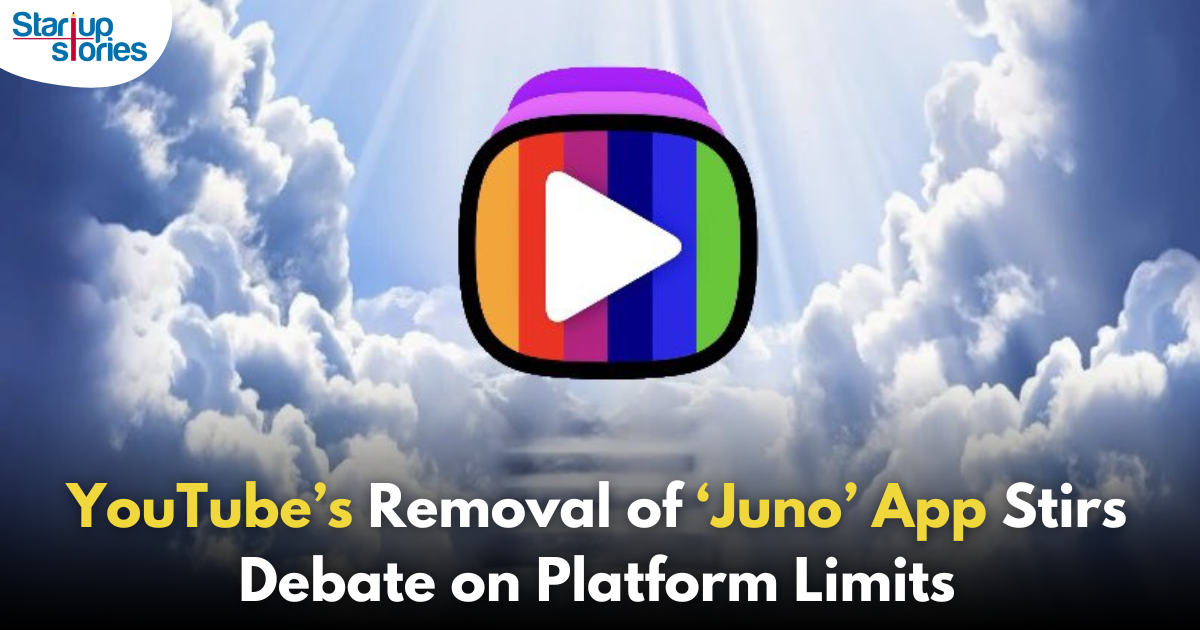In a recent blog post, developer Cristian Selig announced the removal of his Vision Pro app, Juno, from the App Store after YouTube requested Apple take it down. Juno provided a simplified web view of YouTube content optimized for Apple’s Vision Pro mixed-reality headset. However, despite YouTube not having an official app for the Vision Pro, the Google-owned platform reportedly cited guideline violations to justify the takedown, leaving the developer disheartened and puzzled.
Developer’s Clarification
Selig, well-known for the Reddit app Apollo, clarified in his post that Juno didn’t alter YouTube’s content or interface in any significant way, aside from a few aesthetic modifications to better suit the Vision Pro’s interface. He emphasized that Juno functioned primarily as a web viewer, with minimal CSS adjustments to enhance compatibility with visionOS, while maintaining all logos and respecting YouTube’s branding guidelines. The app also didn’t interfere with YouTube ads or suggest any official affiliation with YouTube.
“For those who enjoyed Juno, it should continue to work for now—until a YouTube site update potentially changes that,” Selig said. “I built this app for fun and to gain experience with Vision Pro, so I don’t intend to escalate the issue further.”
Implications of the Takedown
YouTube’s decision underscores the ongoing challenges third-party developers face when navigating platform policies set by major tech companies. Selig expressed frustration over YouTube’s unwillingness to clarify their objections, sharing that discussions reached a standstill before Apple notified him of Juno’s removal.
AppleInsider noted that Juno’s removal raises questions about the future of other third-party YouTube clients on Vision Pro. One such app, Television by Sandwich, similarly enables YouTube viewing via visionOS within a retro TV model. Whether YouTube will pursue similar actions against these alternatives remains uncertain, but the incident highlights the tightrope independent developers walk when offering access to content on restricted platforms like YouTube.
Future of Third-Party Apps
Selig’s farewell to Juno leaves Vision Pro users without an optimized YouTube solution for now, underscoring the unique obstacles faced by developers and users alike on emerging technologies. As the demand for immersive content grows, developers may find it increasingly difficult to create apps that comply with platform policies while still providing valuable services.
Context on YouTube’s App Development
Currently, there is no official YouTube app available for the Apple Vision Pro. Users have been relying on third-party applications like Juno or accessing YouTube through Safari. A spokesperson from YouTube has indicated that an official app is in development but has not provided a timeline for its release.
Conclusion
The removal of Juno from the App Store serves as a reminder of the complexities involved in developing applications that interact with major platforms like YouTube. As independent developers navigate these challenges, users are left seeking alternative solutions for accessing their favorite content on new technologies like the Apple Vision Pro.
The incident raises important questions about the future of third-party applications in an ecosystem where major companies exert significant control over content access and distribution. As developers continue to innovate in this space, it will be crucial for them to find ways to comply with platform guidelines while still delivering unique and engaging user experiences.


binance sign up bonus
June 30, 2025 at 4:48 am
Thank you for your sharing. I am worried that I lack creative ideas. It is your article that makes me full of hope. Thank you. But, I have a question, can you help me?
binance
August 4, 2025 at 8:08 am
Thank you for your sharing. I am worried that I lack creative ideas. It is your article that makes me full of hope. Thank you. But, I have a question, can you help me?
GO88
November 6, 2025 at 5:09 pm
Tham gia cộng đồng game thủ tại Go88 để trải nghiệm các trò chơi bài, poker phổ biến nhất hiện nay.
谷歌站群
November 7, 2025 at 1:23 am
专业构建与管理谷歌站群网络,助力品牌实现全域流量的强势增长。谷歌站群
iwin
November 7, 2025 at 10:20 pm
iwin – nền tảng game bài đổi thưởng uy tín, nơi bạn có thể thử vận may và tận hưởng nhiều tựa game hấp
MM88
November 10, 2025 at 2:09 pm
Với giao diện mượt mà và ưu đãi hấp dẫn, MM88 là lựa chọn lý tưởng cho các tín đồ giải trí trực tuyến.
站群程序
November 10, 2025 at 9:12 pm
搭载智能站群程序,自动化搭建与管理,为SEO项目提供核心驱动力。站群程序
站群程序
November 11, 2025 at 5:32 pm
搭载智能站群程序,自动化搭建与管理,为SEO项目提供核心驱动力。站群程序
Kuwin
November 13, 2025 at 6:38 am
kuwin sở hữu kho game đa dạng từ slot đến trò chơi bài đổi thưởng, mang đến cho bạn những giây phút giải trí tuyệt vời.
binance
November 14, 2025 at 5:54 am
Your article helped me a lot, is there any more related content? Thanks!
MM88
November 22, 2025 at 9:50 am
Khám phá thế giới giải trí trực tuyến đỉnh cao tại MM88, nơi mang đến những trải nghiệm cá cược thể thao và casino sống động.